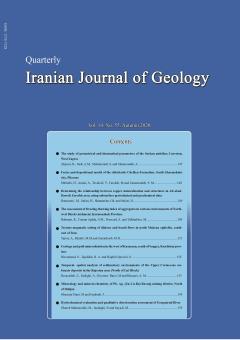-
-
List of Articles
-
Open Access Article
1 - Determinig the relationship between copper mineralization and structures in Ali abad- Darreh Zereshk area, using subsurface geotechnical and geochemical data
Mehdi Ramazani Hojjat Ollah Safari Gholam Hossein Shamanian Homayoun Safaei -
Open Access Article
2 - The assessment of freezing-thawing index of aggregates in various environments of Northwest Direh catchment, Kermenshah Province
کاظم بهرامي Seyed Mahmoud Fatemi Aghda Ali Noorzad Mehdi Talkhablou -
Open Access Article
3 - Tectono-magmatic setting of diabase and basalt flows in north Makran ophiolite, southeast of Iran
Azizollah Bazzi Mohammad Mahdi Khatib Mohammadhosein Zarrinkoub -
Open Access Article
4 - Geology and gold mineralization in the west of Kasnazan, south of Saqqez, Kurdistan province
Shojaeddin Niroomand Hossein Ali Tajeddin Saba Haghiri Qazvini -
Open Access Article
5 - Temporal- spatial analysis of sedimentary environments of the Upper Cretaceous carbonate deposits in the Bajestan area (North of Lut Block)
Zahra Rezazadeh Mahmoud Jalali Mahbobeh Hosseni- Barzi Ahmad- Reza Khazaee -
Open Access Article
6 - Mineralogy and mineral chemistry of Pb- Ag- (Zn-Cu-Ba) Ravanj mining district, North of Delijan
Majid Ghasemi siani Fateme Isaabadi -
Open Access Article
7 - Hydrochemical evaluation and qualitative deterioration assessment of Gorganrud River
Mojtaba G.Mahmoodlu Nader Jandaghi Maryam Sayadi -
Open Access Article
8 - Geometrical parameter, Anticline, Sarkan, Zagros, Lurestan
Reza Alipoor امیرحسین صدر farid shahmoradi عارف شمسزاده -
Open Access Article
9 - Facies and depositional model in siliciclastic Chelken Formation, South Ghaemshahr City
هوشنگ مهرابی عبدالحسین امینی وحید توکلی مرتضی فرخی Seyed Mohad Zamanzadeh
-
The rights to this website are owned by the Raimag Press Management System.
Copyright © 2017-2026







